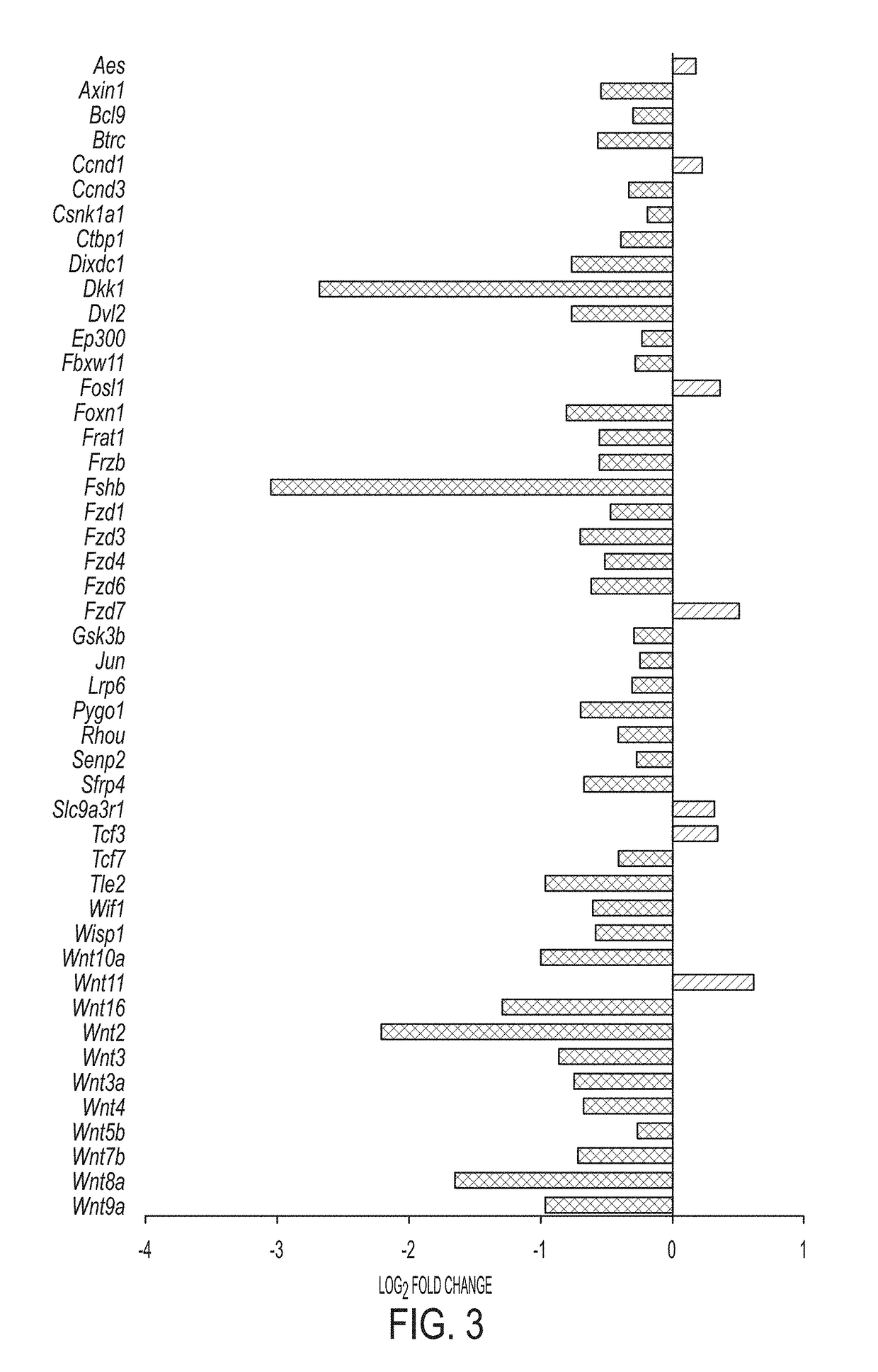Cholinergic antagonism as an adjunct to cancer therapy
a cancer therapy and antagonism technology, applied in the direction of osmotic delivery, peptide/protein ingredients, heterocyclic compound active ingredients, etc., can solve the problem of often painful conditions
- Summary
- Abstract
- Description
- Claims
- Application Information
AI Technical Summary
Benefits of technology
Problems solved by technology
Method used
Image
Examples
example 1
Denervation Suppresses Gastric Tumorigenesis
[0225]The nervous system plays an important role in the regulation of epithelial homeostasis and has also been postulated to play a role in tumorigenesis. Provided herein is evidence that proper innervation is critical at all stages of gastric tumorigenesis. In three separate mouse models of gastric cancer, surgical or pharmacological denervation of the stomach (bilateral or unilateral truncal vagotomy, or local injection of botulinum toxin) markedly reduced tumor incidence and progression, but only in the denervated portion of the stomach. Vagotomy or botulinum toxin treatment also enhanced the therapeutic effects of systemic chemotherapy and prolonged survival. Denervation induced suppression of tumorigenesis was associated with inhibition of Wnt signaling and suppression of stem cell expansion. In gastric organoid cultures, neurons stimulated growth in a Wnt-mediated fashion through cholinergic signaling. Furthermore, pharmacological in...
example 2
NGF Regulates Gastric Cancer Development Through Tumor-Associated Neurogenesis Originating from Dclk1+ Neural Progenitors
[0375]R26-LSL-NGF mice show increased nerves and spontaneous stomach dysplasia that is blocked when the Muscarinic 3 receptor is knocked out in the gastric epithelium. A similar effect was seen in the colon.
[0376]Tumors secreted neurotrophins that lead to growth of nerve axons towards the tumor (FIG. 25). Nerves then secrete neurotransmitters and / or growth factors that stimulate proliferation of tumors.
[0377]Conditional NGF overexpression mice were generated (FIG. 26). The construct CAG-LSL-NGF-IRES-EGFP was generated through recombineering of the Rosa26 BAC and then inserted into the mouse germline. Expression of NGF and EGFP is prevented by a stop codon surrounded by 1oxP sites. By mating with Cre-expressing transgenic mice, the Stop sequence is removed and NGF will be expressed in specific cell types. The TFF2-Cre (line3a) was crossed to Rosa26-mTmG (Tomato-GFP...
example 3
Nerve Growth Factor Promotes Gastric Tumorigenesis through Aberrant Cholinergic Signaling
[0386]Described herein is the use of a series of mouse models to show that acetylcholine from Dclk1 +tuft cells and nerves induces NGF in gastric epithelial cells, which promotes neuron expansion and tumorigenesis. YAP is activated through the cholinergic signaling, and inhibition of this pathway can block NGF-driven tumors.
[0387]The results decribes herein show that: (i) NGF expression is induced in gastric cancer by ACh from nerves and tuft cells; (ii) NGF promotes innervation and proliferation in gastric epithelium; (iii) blockade of NGF or ablation of cholinergic tuft cells inhibits tumor development; and (iv) cholinergic signaling activates YAP signaling that is essential for Wnt activation.
[0388]Summary and Significance
[0389]Within the gastrointestinal stem cell niche, nerves help to regulate both normal and neoplastic stem cell dynamics. Here, the mechanisms underlying the cancer-nerve pa...
PUM
| Property | Measurement | Unit |
|---|---|---|
| time | aaaaa | aaaaa |
| time | aaaaa | aaaaa |
| time | aaaaa | aaaaa |
Abstract
Description
Claims
Application Information
 Login to View More
Login to View More - R&D
- Intellectual Property
- Life Sciences
- Materials
- Tech Scout
- Unparalleled Data Quality
- Higher Quality Content
- 60% Fewer Hallucinations
Browse by: Latest US Patents, China's latest patents, Technical Efficacy Thesaurus, Application Domain, Technology Topic, Popular Technical Reports.
© 2025 PatSnap. All rights reserved.Legal|Privacy policy|Modern Slavery Act Transparency Statement|Sitemap|About US| Contact US: help@patsnap.com



